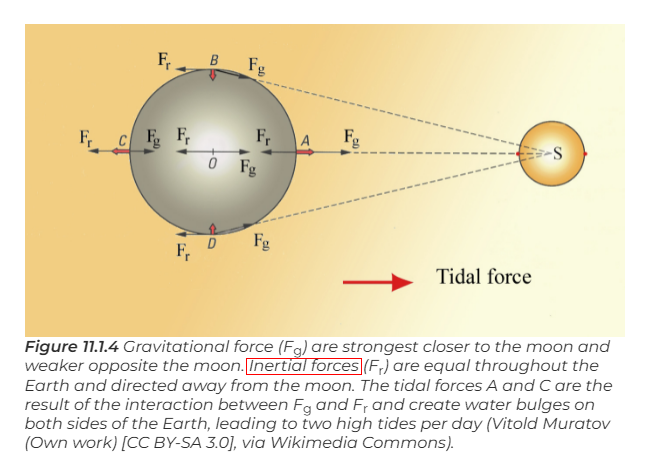 |
| From Ross, D.A.: Introduction to Oceanography (1995), p238. |
Ross, D.A.: Introduction to Oceanography (1995)
In the United States, textbooks and websites that use the term "inertial force" or "inertia" instead of "centrifugal force" to explain tidal force have increased since the 1990s. The following is a description of tides in the textbook Introduction to Oceanography (1995) by David A. Ross. The cause of the tidal force is precisely explained. |
| From Ross, D.A.: Introduction to Oceanography (1995), p238. |
NOAA NOS (National Ocean Service): "Tides and Water Levels" (2005-)
The figure below is from NOAA NOS - "Education" - "Tides and Water Levels" - Gravity, Inertia, and Bulges. The figure is simplified and exaggerated to show that the near side to the moon is bulged only by gravity and the far side is bulged only by inertia. In reality, gravity slightly (only about 1/30) exceeds inertia on the near side, while gravity is slightly less than inertia on the far side.
 |
| From the education site by NOAA NOS (2005-). |
Webb, P.: Introduction to Oceanography (2017)
The figure below is from the textbook
Introduction to Oceanography
by Paul Webb, published by Roger Williams University.
(Note) The figure is good, but unfortunately, the text in section 11.1 of this textbook has some problems.
It describes the motion of the earth around the common center of gravity as rotation.
Since the Earth's rotation is stopped when considering tidal forces, the term "revolution" or "revolution without rotation" should be used instead of "rotation."
Please be careful when reading section 11.1.
 |
| From Webb, P.: Introduction to Oceanography (2017). |